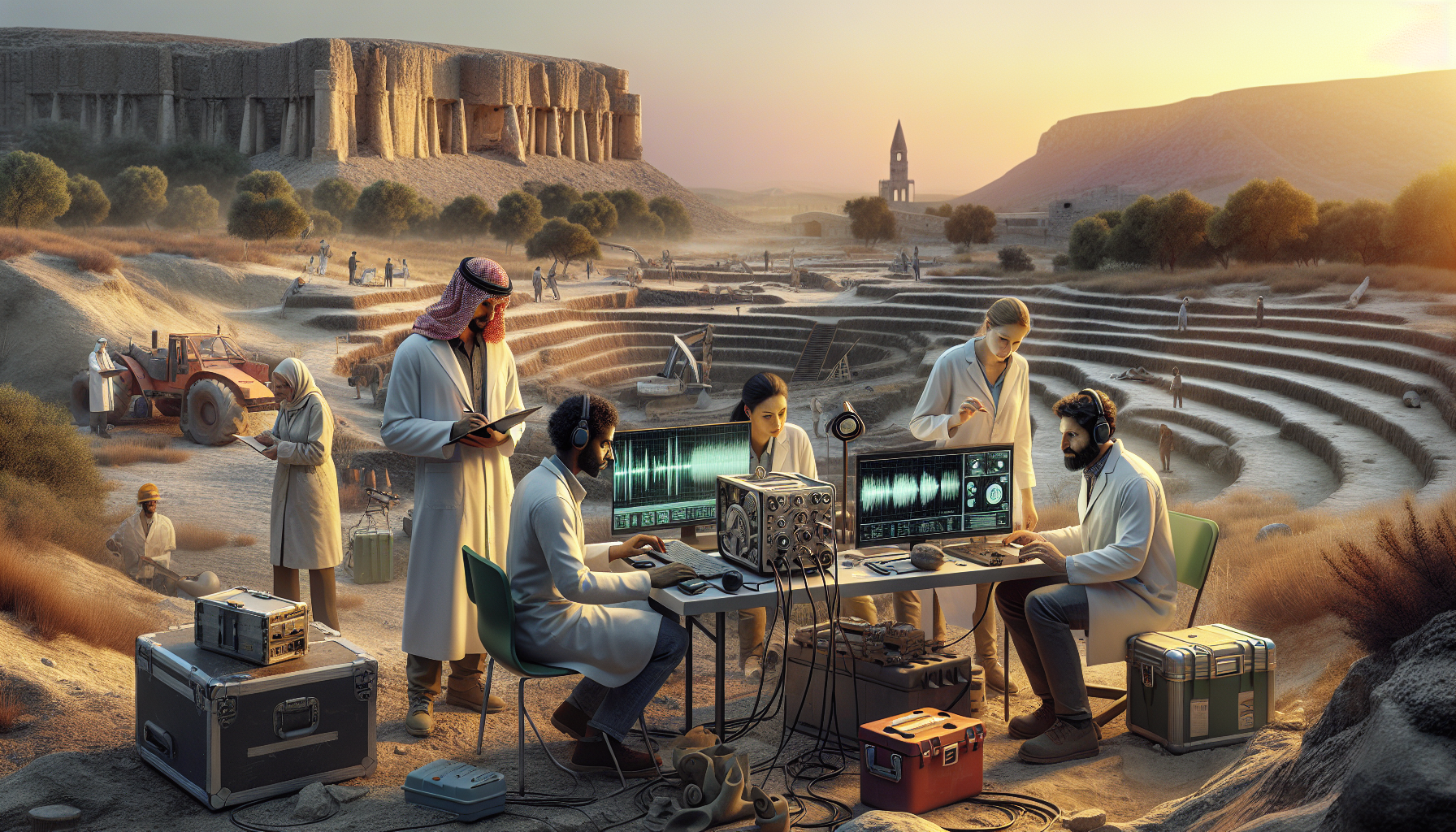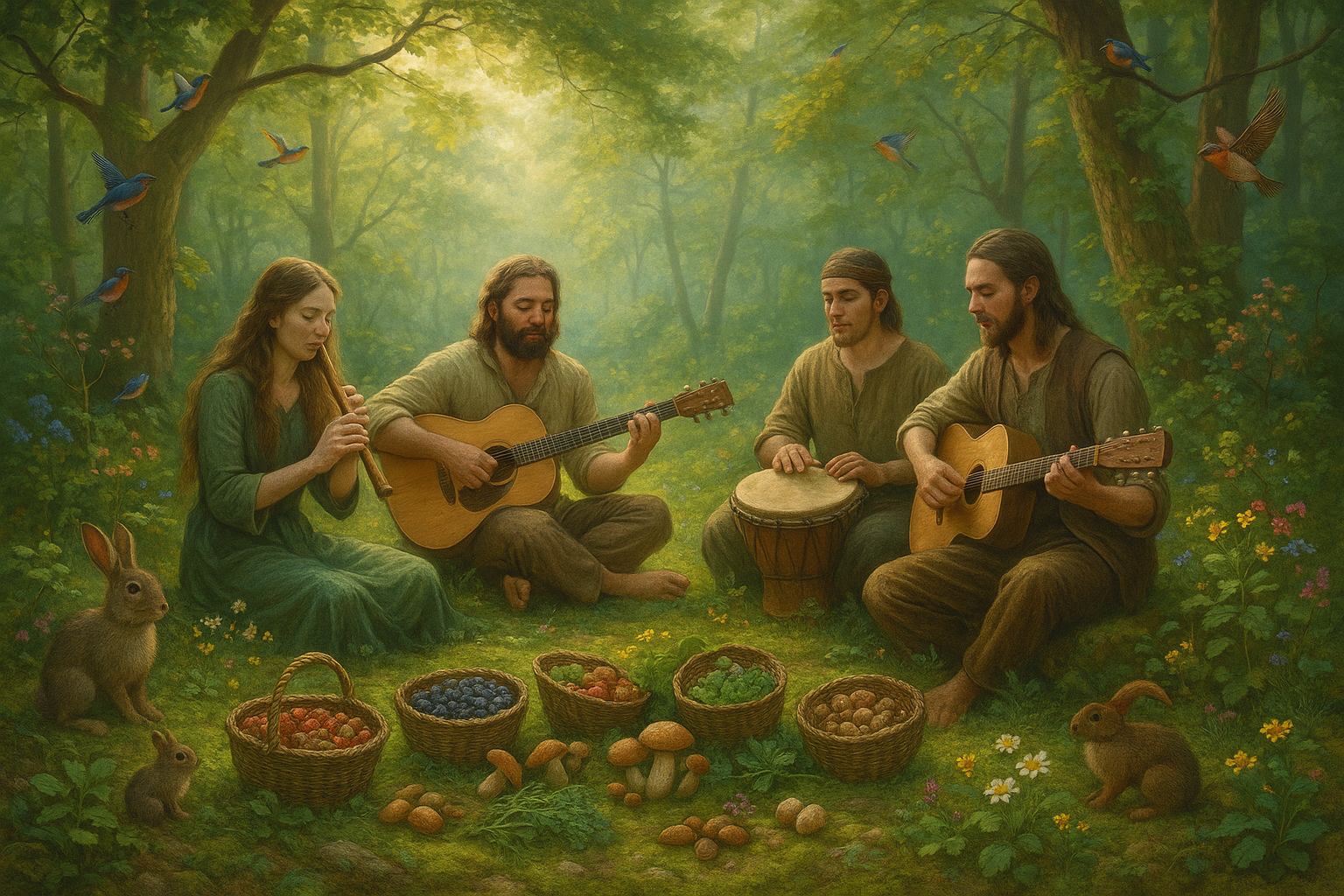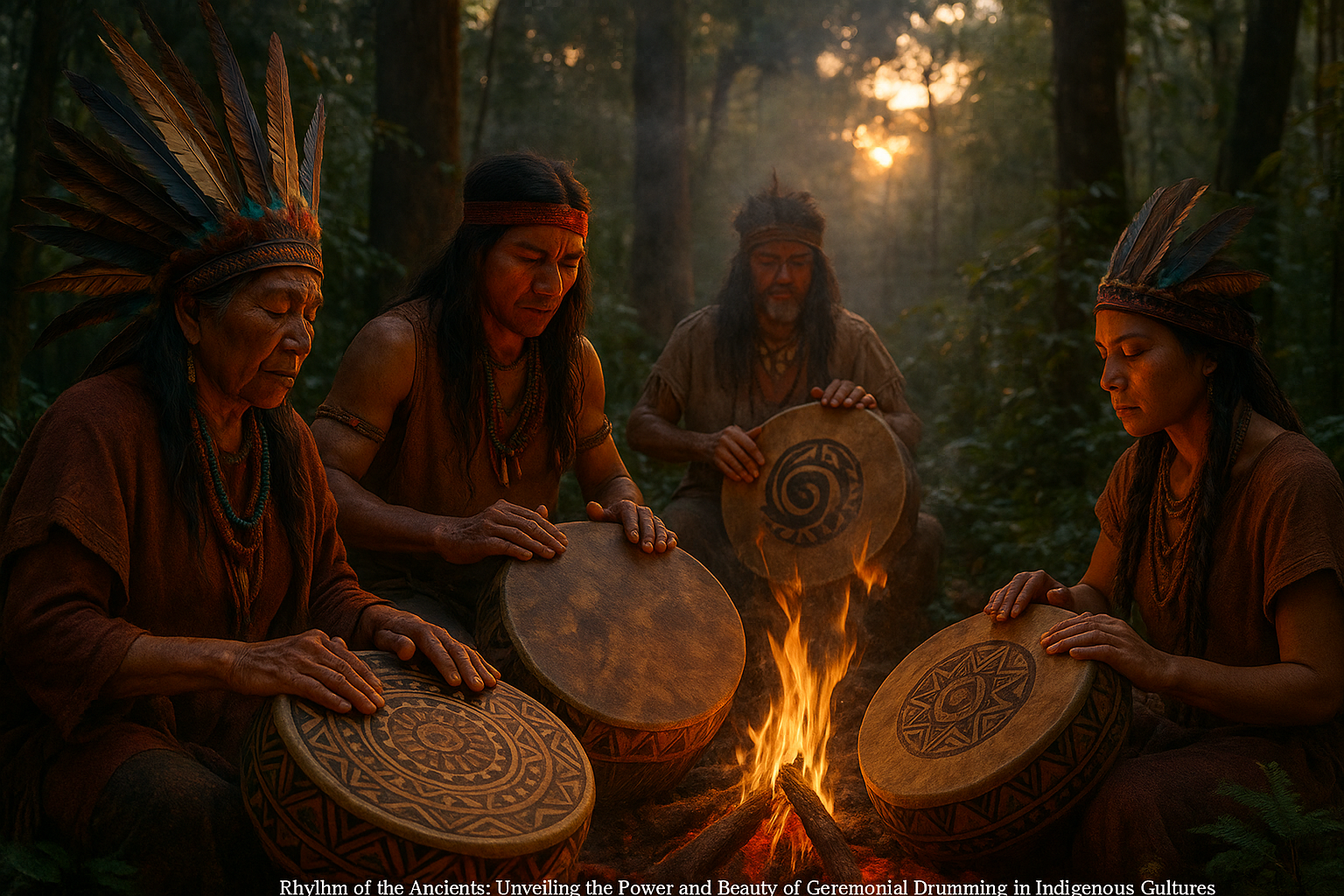In a world where we are constantly surrounded by the cacophony of modern life, from the hum of technology to the bustle of urban environments, it’s easy to forget that sound has always played a crucial role in shaping human experience. Yet, deep in the layers of history, beneath the earth and in the ruins of ancient civilizations, lies a hidden symphony that once dictated the rhythms of daily life. The study of this lost soundscape, or ecosound, is an emerging field that promises to revolutionize our understanding of history, providing a richer, more nuanced narrative of the past. By piecing together the auditory environments of ancient times, researchers are not just uncovering what our ancestors heard, but also how these sounds influenced their cultures, beliefs, and interactions with the world around them. 🎶
This journey into the depths of historical soundscapes begins with the meticulous work of archaeologists, historians, and sound engineers who employ cutting-edge technology to recreate the auditory environments of bygone eras. From the echoes of ancient marketplaces bustling with traders to the sacred chants resonating in monumental temples, every sound has a story to tell. The reconstruction of these soundscapes involves a fascinating blend of science and art, combining acoustical modeling, archaeological evidence, and even ancient texts to breathe life into silent ruins. As we delve into this field, we will explore how sound shaped societal structures, influenced religious practices, and even played a role in the rise and fall of empires. Such auditory reconstructions allow us to experience history in a profoundly immersive way, offering insights that written records alone cannot provide. 📜
In this article, we will journey through the various facets of ancient ecosound reconstruction, beginning with the techniques and technologies that make this possible. We will then examine case studies from different civilizations, each revealing unique aspects of how sound influenced their development. From the reverberating acoustics of the Roman Colosseum to the serene harmonies of the Chinese zither, these examples will highlight the diversity and complexity of historical soundscapes. Furthermore, we will consider the implications of this research for modern society, contemplating how understanding the past can inspire present and future soundscapes. By the end of this exploration, you will gain a deeper appreciation for the role of sound in history and how it continues to shape our world today. So, prepare to tune in to the echoes of the past and discover a new dimension of history that resonates through time. 📚
The Significance of Reconstructing Ancient Ecosounds
Understanding the world of our ancestors goes beyond the study of artifacts and ancient texts; it delves into the very sounds that surrounded them. The reconstruction of ancient ecosounds — the natural sounds of historical landscapes — offers a profound insight into the environments that shaped human history. By exploring these sounds, we gain a unique perspective on how ancient societies interacted with their surroundings, the challenges they faced, and the strategies they developed to thrive.
One of the core reasons for reconstructing ancient ecosounds is to fill the sensory gaps left by traditional archaeological methods. While visual artifacts like pottery, tools, and ruins provide tangible links to the past, they often lack the context of the soundscapes that once enveloped these objects. By recreating the auditory backdrop of historical sites, researchers can enhance their understanding of how these places were experienced by those who lived there. This sensory context is crucial in building a comprehensive picture of past environments and their impact on human behavior.
Moreover, ancient ecosounds can inform us about the biodiversity of historical periods, revealing the presence of species that may no longer exist or have drastically changed in distribution. For instance, the calls of now-extinct birds or the rustling of plants that once dominated ancient landscapes can be digitally reconstructed through the study of fossil records, ancient texts, and modern equivalents. These reconstructions help paint a vivid picture of the environmental conditions of different epochs, contributing to our understanding of ecological changes over time.
Techniques and Technologies in Ecosound Reconstruction
The process of reconstructing ancient ecosounds involves a multidisciplinary approach, drawing from fields such as archaeology, biology, acoustics, and digital technology. One primary technique is the use of computer models to simulate historical soundscapes based on environmental data and archaeological findings. These models consider factors such as geography, climate, and vegetation to recreate the sounds that would have been present in a given area at a specific time.
Sound archaeology, a burgeoning field, also plays a crucial role in this process. It involves analyzing sound-producing artifacts such as musical instruments, bells, and other resonant objects found at archaeological sites. By understanding the materials and construction methods of these artifacts, researchers can make informed guesses about their sounds and incorporate these into the reconstructed soundscapes.
Advanced recording techniques and software enable scientists to blend historical data with contemporary soundscapes, resulting in immersive auditory experiences. These reconstructions can be further enhanced by integrating artificial intelligence and machine learning, which help in predicting and filling in missing auditory elements. This innovative use of technology not only aids in academic research but also in educational initiatives, allowing people to “hear” history in a new, engaging way.
Applications and Implications of Ancient Ecosound Studies
The study of ancient ecosounds has numerous applications across various domains, including education, heritage preservation, and environmental conservation. In educational contexts, these reconstructions offer a dynamic tool for engaging learners with history and ecology. By providing a multisensory experience, students can better grasp the interconnectedness of natural and human history, fostering a deeper appreciation for both.
In heritage preservation, ecosound reconstructions contribute to the authenticity and richness of historical site exhibitions. Museums and heritage sites can utilize these soundscapes to recreate the ambiance of ancient places, enhancing the visitor experience. This immersive approach not only attracts more visitors but also supports the mission of these institutions to educate the public and preserve cultural heritage.
Environmental conservation efforts benefit from the insights gained through ancient ecosound studies as well. By understanding past biodiversity and ecosystem dynamics, conservationists can make informed decisions about current and future ecological management strategies. This historical perspective provides a baseline against which modern changes can be measured, aiding in the development of sustainable practices.
Challenges and Future Directions in Ecosound Research
While the field of ancient ecosound research holds immense promise, it also faces significant challenges. One major hurdle is the lack of direct evidence of historical soundscapes. Unlike visual artifacts, sounds do not fossilize, making it difficult to achieve accurate reconstructions. Researchers must rely on indirect evidence, such as ancient texts and archaeological findings, to piece together these auditory landscapes.
Additionally, the subjective nature of sound perception poses a challenge. Different individuals may interpret the same sounds differently, influenced by their cultural and personal backgrounds. This variability complicates efforts to create standardized reconstructions that are universally accepted as accurate representations of past environments.
Looking ahead, advancements in technology and interdisciplinary collaboration are likely to drive the field forward. Increased integration of virtual reality and augmented reality technologies can offer more immersive and accessible experiences of ancient soundscapes. Moreover, expanding collaboration between archaeologists, sound engineers, and ecologists will lead to more refined and robust ecosound models, enriching our understanding of history and its intricate connection to the natural world.
- Enhancing archaeological understanding through sound
- Technological advancements in ecosound modeling
- Challenges in accurately reconstructing historical soundscapes
- Applications in education and heritage preservation
- Impact on environmental conservation strategies
Case Studies and Examples of Ecosound Reconstructions
Several case studies highlight the potential and diversity of ancient ecosound reconstructions. One notable example is the recreation of soundscapes from ancient Greece, where researchers combined archaeological data with historical texts to simulate the auditory environment of classical sites like the Acropolis. These reconstructions offer insights into the acoustics of ancient theaters and public spaces, shedding light on how sound influenced social and cultural activities.
Another fascinating case involves the soundscapes of the Amazon rainforest as it existed centuries ago. By studying pollen records, researchers have reconstructed the sounds of diverse plant and animal species that populated the region, revealing the intricate symphony of an ecosystem that supported numerous indigenous communities. This study not only enhances our understanding of the Amazon’s historical biodiversity but also informs contemporary conservation efforts.
In Scandinavia, the ancient ecosounds of Viking settlements have been explored through the analysis of environmental data and Norse mythology. By synthesizing these elements, researchers have recreated the sounds of seafaring life and coastal environments, providing a richer understanding of Viking culture and their interaction with the natural world.
To delve deeper into the fascinating world of ancient ecosound reconstructions, watch this insightful video: Reconstructing Ancient Soundscapes – A Journey Through Time (YouTube Channel: HistoryUncovered).
Comparative Analysis of Ancient Ecosound Studies
To better understand the scope and impact of ecosound reconstructions, consider the following comparative analysis of key case studies:
| Case Study | Region | Methodology | Key Findings |
|---|---|---|---|
| Ancient Greece | Mediterranean | Archaeological data and historical texts | Insights into ancient theater acoustics and cultural practices |
| Amazon Rainforest | South America | Pollen records and ecological analysis | Understanding of historical biodiversity and ecosystem dynamics |
| Viking Settlements | Scandinavia | Environmental data and Norse mythology | Recreation of seafaring and coastal soundscapes |
These examples demonstrate the diverse applications and methodologies employed in ancient ecosound studies, highlighting the interdisciplinary nature of this research. By continuing to explore these soundscapes, we unlock new dimensions of historical understanding, connecting the past to the present in profound ways.
Overall, the reconstruction of ancient ecosounds represents a pioneering effort to enrich our understanding of history and the natural world. As technology advances and interdisciplinary collaborations grow, the potential for this field continues to expand, promising new insights and applications that bridge the gap between past and present.

Conclusion
In delving into the depths of our planet’s history, the exploration of ancient ecosound provides a groundbreaking lens through which we can reconstruct and better understand the tapestry of life that once existed. This field of study, a fusion of archaeology, paleontology, and acoustic science, offers a unique opportunity to listen to echoes from the past, piecing together the sonic landscapes that once reverberated across ancient ecosystems. The article explored various methodologies, from analyzing fossilized sound-producing structures to using computer simulations and bioacoustic reconstructions, to recreate the sounds that filled prehistoric environments.
One of the key points highlighted is the innovative use of technology in reconstructing these ancient soundscapes. By leveraging advancements in acoustic modeling and virtual reality, scientists can create immersive experiences that transport us back in time, allowing us to “hear” the world as it was millions of years ago. This not only enhances our understanding of historical biodiversity but also provides insights into the evolutionary adaptations of sound communication in different species. It underscores the intricate relationship between organisms and their environments, demonstrating how sound played a crucial role in survival, reproduction, and social interaction.
Another significant aspect covered in the article is the cultural and educational impact of these reconstructions. By providing a more tangible connection to the past, reconstructed ecosounds have the power to engage the public and inspire a deeper appreciation for the natural world. Museums and educational institutions are increasingly incorporating these auditory experiences into their exhibits, enriching the learning experience and sparking curiosity about our planet’s history. This auditory exploration of history serves as a powerful tool for storytelling, bridging the gap between scientific research and public understanding.
Moreover, the study of ancient ecosound also raises important questions about the preservation and documentation of modern soundscapes, as current ecosystems face unprecedented changes due to climate change and human activity. It challenges us to consider the sonic legacies we are leaving for future generations and the importance of conserving the acoustic diversity of today’s natural environments. By understanding the sounds of the past, we gain a greater appreciation for the richness and complexity of life on Earth, motivating us to protect it for the future.
The importance of this research cannot be overstated. As we reconstruct and listen to the sounds that once echoed through ancient landscapes, we are reminded of the interconnectedness of life and the ever-evolving narrative of our planet. These sonic journeys into the past enrich our understanding of history, providing a more comprehensive picture of how life on Earth has changed over millions of years. They serve as a testament to the resilience and adaptability of life, offering valuable lessons for navigating the challenges of the present and future.
In conclusion, the exploration of ancient ecosound is not merely an academic exercise but a profound journey into the very essence of life on Earth. It invites us to listen to the past with new ears, to appreciate the symphony of life that has played out across millennia. As we continue to unearth these ancient sounds, we are called to reflect on our role in preserving the natural world and the importance of fostering a deeper connection with the history that surrounds us. I encourage you to share your thoughts and insights on this fascinating topic in the comments below, and to share this article with others who may be inspired by the rich tapestry of sound that connects us all to our ancient past.
For further exploration, you can check out the following resources that delve deeper into the science of ecosound and its applications:
–
– National Geographic: The Lost Sounds of Dinosaurs
These resources provide additional context and examples of how ancient ecosounds are being studied and appreciated, offering a wealth of knowledge for those eager to explore this captivating field further. 🌿🔍
Toni Santos is a sensory storyteller and soundscape artisan whose work explores the forgotten language of the Earth through acoustic ecology storytelling. With a deep reverence for the natural world’s sonic textures, Toni crafts narratives that awaken our ears to the subtle music of forests, winds, waters, and wild silence.
His creative journey is rooted in a desire to preserve and interpret the acoustic heritage of environments, both ancient and fragile. From the echo of birdsong in a disappearing jungle to the resonance of stones in sacred landscapes, Toni’s stories reflect the memory held in sound—often overlooked, yet deeply felt.
With a background in environmental aesthetics and sonic design, Toni blends field recordings, visual symbolism, and poetic insight to create immersive experiences that honor the sonic soul of nature. His work does more than document; it invites listeners to re-tune themselves to the rhythms of life that still pulse beneath modern noise.
As the voice behind Vizovex, Toni shares sound-based studies, ambient narratives, and reflective content that help others reconnect with how sound shapes memory, meaning, and place.
His work is a tribute to:
The lost soundscapes of vanishing ecosystems
The role of natural acoustics in cultural and emotional memory
The healing potential of listening deeply to the world
Whether you’re an artist, an ecologist, or someone drawn to the quiet power of listening, Toni invites you into a space where every rustle, ripple, and resonance becomes a story—one note, one place, one heartbeat at a time.





